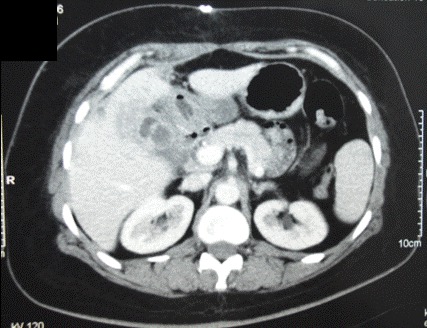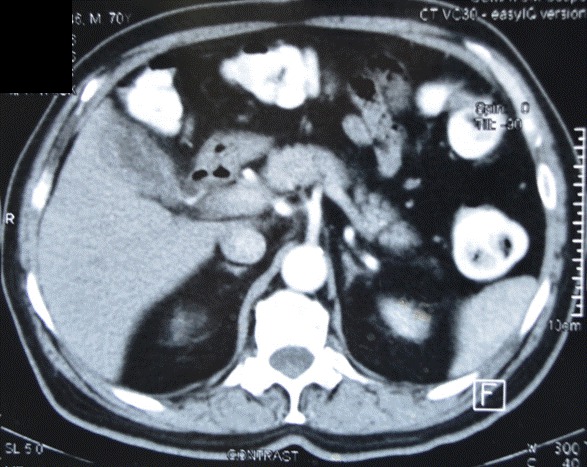|
Back to 2017 Posters
CARCINOMA GALLBLADDER IN ENDEMIC REGIONS HAS PROBLEM OF UNDER-DIAGNOSIS AND OVER-DIAGNOSIS
Gautham Krishnamurthy*1, Sunil Shenvi1, Rajesh Gupta1, Naveen Kalra2, Surinder Rana3, Rajinder Singh1
1Surgical Gastroenterology Division, Postgraduate Institue of Medical Education and Research, Chandigarh, Chandigarh, India; 2Radiodiagnosis and Imaging, Postgraduate Institue of Medical Education and Research, Chandigarh, India; 3Gastroenterology, Postgraduate Institue of Medical Education and Research, Chandigarh, India
Introduction
High incidence of gallstone related benign diseases in endemic regions of carcinoma gallbladder, makes diagnosing malignancy difficult as many of them can have overlapping features. This is more important because in carcinoma gall bladder, preoperative tissue diagnosis is not recommended and for presumed uncomplicated gall stone disease transabdominal sonography is generally the only modality used for preoperative evaluation.
Materials and methodology
Present study is retrospective analysis of prospectively maintained data base between July 2002 and July 2016. All patients deemed resectable on clinical evaluation and CECT examination underwent surgical exploration. Patients of incidental carcinoma and those with benign histology after radical resection were the subject of present study.
Results
127 patients with presumed diagnosis of resectable carcinoma gall bladder were included. One patient was diagnosed with hilar cholangiocarcinoma postoperatively and was excluded. There were 28 patients of incidental carcinoma gall bladder referred to us for completion radical cholecystectomy. These patients were termed as under-diagnosis. Preoperative USG reported gall stone disease with normal wall thickness in 17/28 patients. Detailed histopathology report of gall bladder specimen was available for 21 patients of which 13 had ≥T2 disease while 8 had T1 disease. Factors adversely affecting subsequent R0 resection in this group included presence of soft tissue mass in the gallbladder fossa, presence of comorbidities and nausea (p<0.05).
There were 99 patients admitted with presumed carcinoma gall bladder. 23/99 had metastatic or unresectable disease on preoperative re-evaluation and 23 had inoperable disease on surgical exploration. 53 underwent radical surgery for clinico-radiological diagnosis of carcinoma GB. 10/53 had benign disease on histology. These included chronic cholecystitis (n=2), xanthogranulomatous cholecystitis (n=6) and gallbladder tuberculosis (n=2). This group represents over-diagnosis. On comparing the benign and malignant patients undergoing radical surgery, there was no difference in the preoperative clinical presentation (age, gender, pain, jaundice, cholangitis and abdominal findings) and preoperative CECT findings (Image 1,2).
Conclusion
22% patients had incidental carcinoma in the present series. High incidence of incidental carcinoma means that there is need for sensitization of sonologists to the possibility of carcinoma in gall stone disease especially in endemic regions. On the other hand, 19% had diagnosis of benign disease in patients undergoing radical cholecystectomy for presumed carcinoma. This high incidence impresses the need of better imaging techniques to make reliable differentiation between benign mimickers and malignancy to avoid morbidity of major resection.

Contrast enhanced computed tomography showing xanthogranulomatous cholecystitis mimicking carcinoma gallbladder with liver infiltration and possible duodenal involvement

Contrast enhanced computed tomography of chronic cholecystitis showing irregular gall bladder wall thickening
Back to 2017 Posters
|



